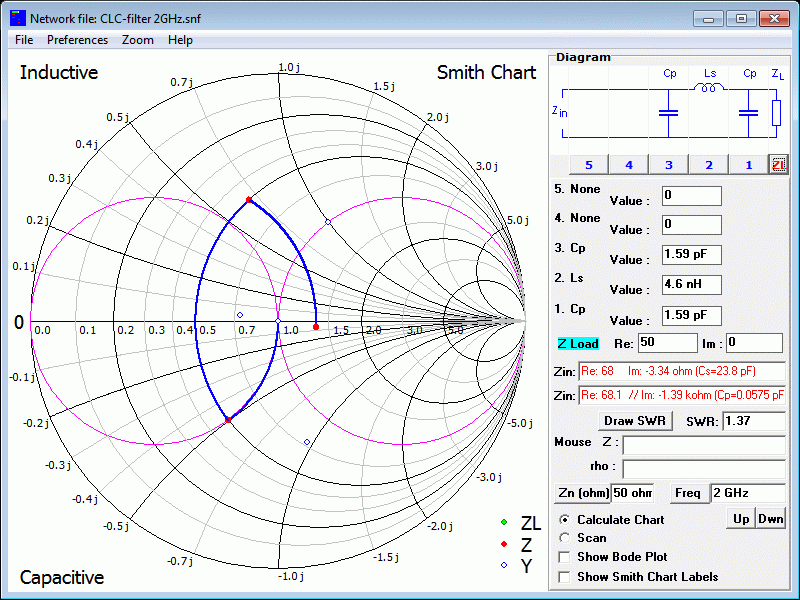
One popular method for plotting impedance and determining impedance matching is to use a Smith chart. When the lengths of the open shunt stubs XTLO1 and XTLO2 are chosen to be 21.9mm and 30.6mm, respectively, the input impedance looking into the combination of the stub and the load to the right becomes 50Ω.There are many methods for impedance matching in your circuits. Note that the length of the connecting (spacer) T-Line is chosen to be λ g/8 = λ 0/8 = 18.75mm. Place and connect the parts as shown in the figure below. The double-stub matching network is inserted between the source circuit and the capacitive load of 60 - j80 Ohms at f = 2GHz. The following is a list of parts needed for this part of the tutorial lesson: In the last part of this tutorial lesson, you will explore a double-stub matching network. The two stubs can be open, short or mixed.ĭouble-Stub Impedance Matching Using Two Open Stubs From the equation B 2 = -B in, you can determine the length of the second stub.


Solving the above equation, you can find B 1 and the length of the first stub. In this case, the above equation reduces to: This length is usually chosen to be d = λ g/8. Remember that in double stub matching, we fix the distance d between the two shunt stubs. The admittance looking into a T-Line segment of length d terminated by the load Y L is given by: Let the load admittance be Y L = 1 / Z L = G L + j B L. The design of the series tuning stub utilized in the previous part is now explained. In many cases, the given load needs to be impedance-matched to a transmission line of given characteristic impedance as shown in the figure below:ĭouble series stubs placed λ g/8 apart. The purpose of impedance matching is to connect an arbitrary complex-valued load impedance to a source with a given resistive internal impedance (usually 50Ω) without causing input reflection and to ensure maximum power transfer from the source to the load. Impedance matching is one of the most important aspects of RF circuit design. The goal is to match inductive or capacitive loads to a 50Ω line or source. In this tutorial you will learn impedance matching using tuning stubs of different types and forms. 8 Double-Stub Impedance Matching Using Two Open Stubs.7 A Summary of Double Stub Matching Theory.6 Single-Stub Impedance Matching Using a Shunt Short Stub.5 A Summary of Shunt Stub Matching Theory.4 Single-Stub Impedance Matching Using a Series Open Stub.

3 A Summary of Series Stub Matching Theory.


 0 kommentar(er)
0 kommentar(er)
